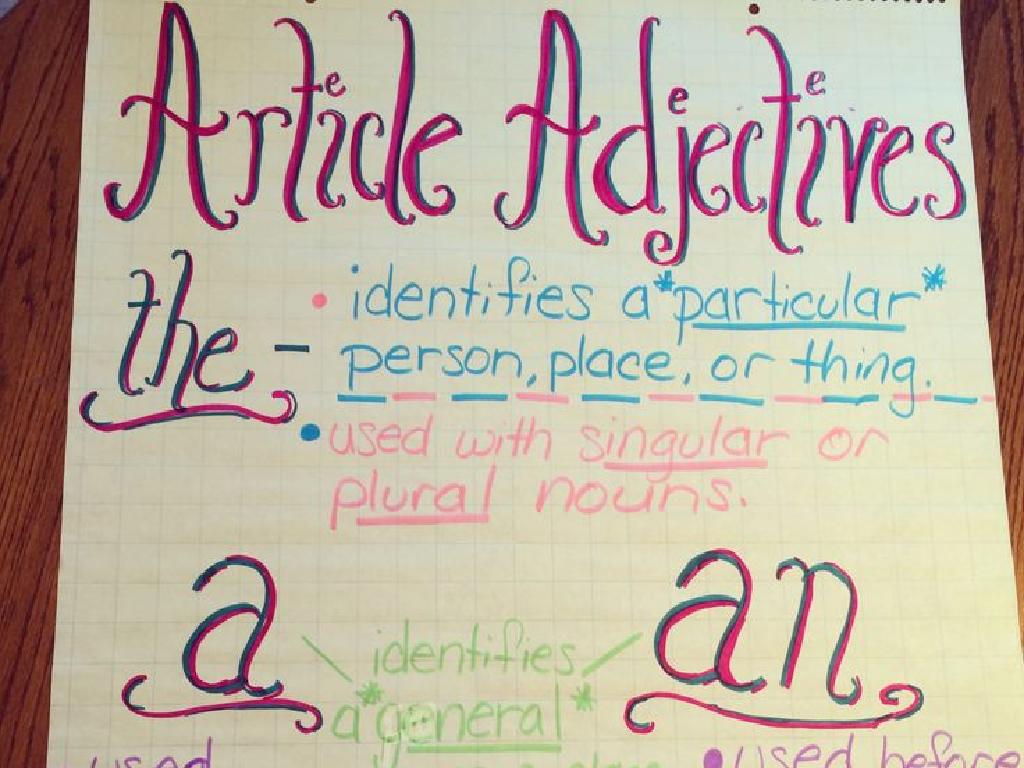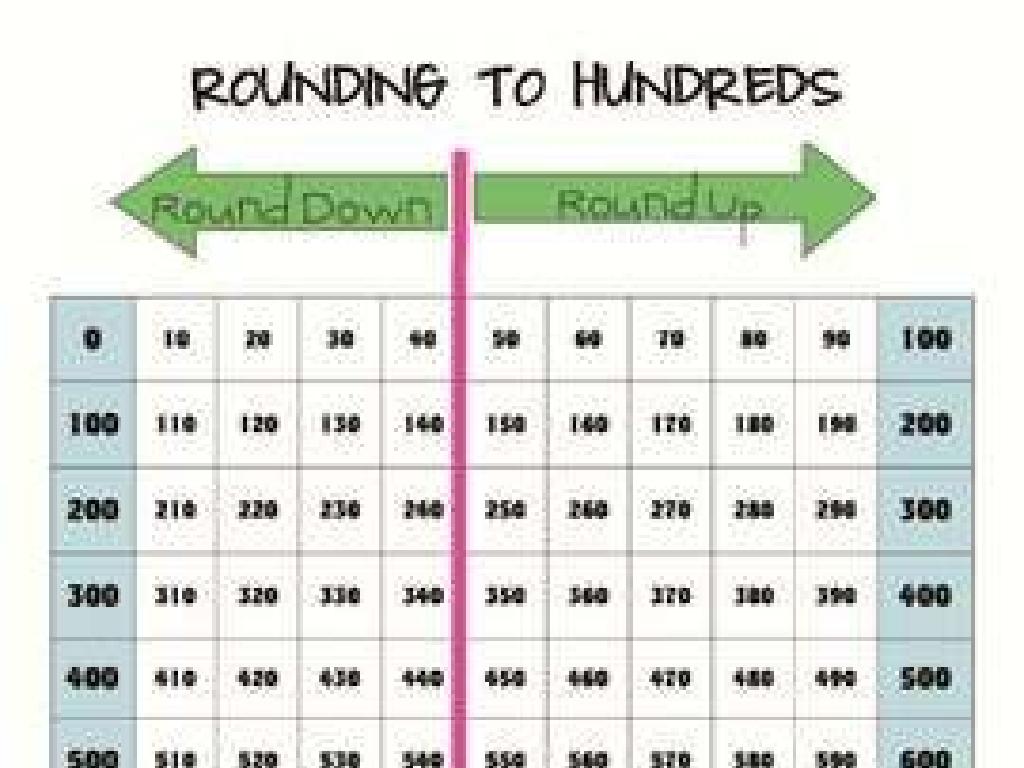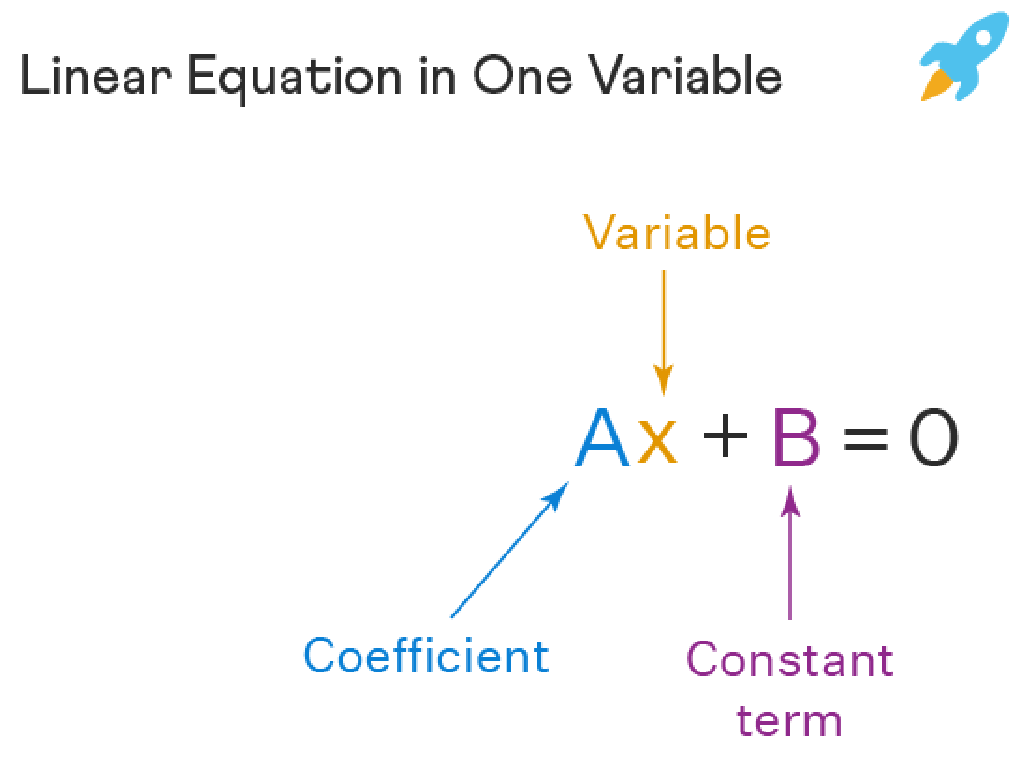Which Addition Or Subtraction Sentence Is True? - Up To 20
Subject: Math
Grade: Second grade
Topic: Mixed Operations: One Digit
Please LOG IN to download the presentation. Access is available to registered users only.
View More Content
Mixed Operations Mastery: True or False?
– Exploring addition & subtraction
– What makes a number sentence true?
– A sentence is true if the math adds up correctly.
– Practice with examples up to 20
– Example: 8 + 5 = 13 (True), 15 – 7 = 9 (False)
– Determine true sentences together
– We’ll solve problems as a class and discuss.
|
This slide introduces the concept of verifying the truthfulness of basic addition and subtraction sentences within the range of 0 to 20. Start by engaging the students with the idea that numbers tell stories and we can figure out if those stories are true or not. Emphasize that a true number sentence has both sides equal after performing the operation. Provide clear examples and counterexamples to illustrate the concept. During the lesson, encourage students to participate by solving problems and explaining their reasoning. This interactive approach will help solidify their understanding of mixed operations and the concept of equality in math.
Understanding Number Sentences
– Number sentences are like stories
– They tell us how numbers work together
– They use addition (+) or subtraction (-)
– Choose + to add, – to take away
– True number sentence example: 4 + 5 = 9
– This sentence adds up correctly
– False example: 6 – 3 = 10
– This sentence does not add up correctly
|
This slide introduces the concept of number sentences to second-grade students, emphasizing that they can represent mathematical situations in the form of a story. It’s important to illustrate that number sentences can be either addition or subtraction and to show examples of both true and false number sentences. Encourage students to verify each sentence by performing the operations. For the true example, 4 plus 5 indeed equals 9, which they can confirm by counting. For the false example, they can count backwards from 6 by 3 and see that it does not equal 10. This will help them understand the concept of true and false number sentences and prepare them for identifying the validity of number sentences up to 20.
True Addition Sentences
– Addition creates a larger number
– When we add, our number grows. Like 5 + 3 becomes 8.
– The ‘+’ sign combines numbers
– We use ‘+’ to add things like 2 apples + 3 apples.
– Example: 3 + 2 equals what?
– Let’s solve 3 + 2 together. What do we get?
– Practice finding true sentences
– Find sentences that make sense, like 4 + 1 = 5.
|
This slide introduces the concept of addition as a way to combine numbers to make a bigger number. Emphasize the use of the ‘+’ sign as the symbol that tells us to add. Use simple examples like 3 + 2 to illustrate the point and ask the class for the answer to involve them in the learning process. Encourage students to practice by identifying true addition sentences, reinforcing the concept that addition increases the total. Provide several examples and counter-examples to ensure understanding. For instance, show that 3 + 2 = 5 is true, but 3 + 2 = 4 is not. This will prepare them for identifying true mathematical sentences.
True Subtraction Sentences
– Subtraction means taking away
– The ‘-‘ sign shows subtraction
– Example: 5 – 1 = ?
– Subtract 1 from 5, what number do we get?
– Find the true sentence
– Let’s solve to see if 5 – 1 equals 4
|
This slide introduces the concept of subtraction as taking away and the use of the ‘-‘ sign to indicate this operation. Start by explaining that subtraction is like having a group of items and then taking some away. Show the ‘-‘ sign and explain that it tells us to subtract. Use the example 5 – 1 to illustrate this point. Ask the students what is left after taking 1 away from 5. Once they answer, confirm if the subtraction sentence ‘5 – 1 = 4’ is true. Encourage the students to use their fingers or objects to count and visualize the subtraction. This interactive approach helps solidify their understanding of basic subtraction.
Finding True Addition & Subtraction Sentences
– True sentences have correct answers
– Use fingers or objects to verify
– Count on fingers: 7 fingers, put 4 down, 3 left
– Example: Is 7 – 4 = 3 true?
– Subtract 4 from 7 and see if it equals 3
– Practice checking sentences together
– We’ll do more examples as a class activity
|
This slide is aimed at helping second-grade students understand the concept of verifying the truthfulness of basic addition and subtraction sentences. Emphasize that a true number sentence means that the math is correct. Demonstrate with an example, such as 7 – 4 = 3, and show how to use fingers or objects to count and check the answer. Encourage students to use these methods to find out if other number sentences are true or false. As a class activity, provide various number sentences and have students work in small groups to determine their truthfulness using counting aids. This hands-on approach will help solidify their understanding of addition and subtraction within 20.
Practice Time: True or False Number Sentences
– Observe each number sentence
– Decide if the sentence is true or false
– Use your addition and subtraction skills up to 20
– Think like a number detective
– Use clues in the numbers to solve the mystery
– Get ready for a fun challenge!
|
This slide is designed to engage second-grade students in a fun and interactive activity where they will apply their addition and subtraction skills to determine the truthfulness of various number sentences. Encourage the students to carefully look at each number sentence presented and use their understanding of basic math operations to decide if the sentence is correct. Remind them to think like detectives, looking for clues and using logic to solve each problem. The activity will help reinforce their arithmetic skills and improve their confidence in evaluating mathematical statements. Prepare a set of number sentences with varying levels of difficulty and be ready to offer guidance if needed. Celebrate correct answers and provide positive feedback to foster a supportive learning environment.
Let’s Play a Game: True or False?
– Play ‘True or False?’ with number sentences
– I’ll write sentences, you show cards
– Correct answers earn team points
– Let’s learn and have fun together!
|
This interactive game is designed to help second graders practice their addition and subtraction skills in a fun, team-based setting. The teacher will write simple one-digit addition or subtraction sentences on the board, and students will use ‘True’ or ‘False’ cards to respond. For example, the teacher might write ‘5 + 3 = 8’ or ‘9 – 4 = 6’, and students will hold up the card that represents the correct answer. This activity encourages quick thinking and reinforces the concept of evaluating the truth of basic math sentences. It’s also a great way to promote teamwork and healthy competition in the classroom. Teachers should prepare a variety of sentences and ensure that all students have a chance to participate.
Class Activity: Number Sentence Hunt
– Join the scavenger hunt
– Find hidden number sentences
– True or false? Decide together
– Is 7 + 8 = 15 or 7 – 5 = 3 true? Discuss with your buddy
– Solve with your partner
– Teamwork makes the math fun and easier!
|
This activity is designed to make learning addition and subtraction up to 20 more engaging through a scavenger hunt. Hide number sentences around the classroom before the activity starts. Pair up students to foster collaboration. They will search for these sentences and work together to determine if each is true or false. Provide guidance on how to approach solving the problems and encourage discussion between partners. Possible variations of the activity could include using a timer to add a sense of urgency, offering small rewards for each correct answer, or having students create their own number sentences for peers to solve.
Number Detective Work: Conclusion
– Celebrate being number detectives
– Practice is key to perfection
– Continue the search at home
– Find addition or subtraction sentences in daily life
– Keep up the great work!
|
Well done to all the students for their hard work in today’s class on identifying true addition and subtraction sentences up to 20. Reinforce the idea that regular practice is essential for mastering math skills. Encourage them to keep an eye out for real-world examples of number sentences, such as on clocks, receipts, or during mealtime, to continue their learning outside of the classroom. Praise their efforts and progress, and remind them that every bit of practice helps them become better at math. For the next class, consider preparing a small quiz or fun activity to review today’s lesson and keep the students engaged.






